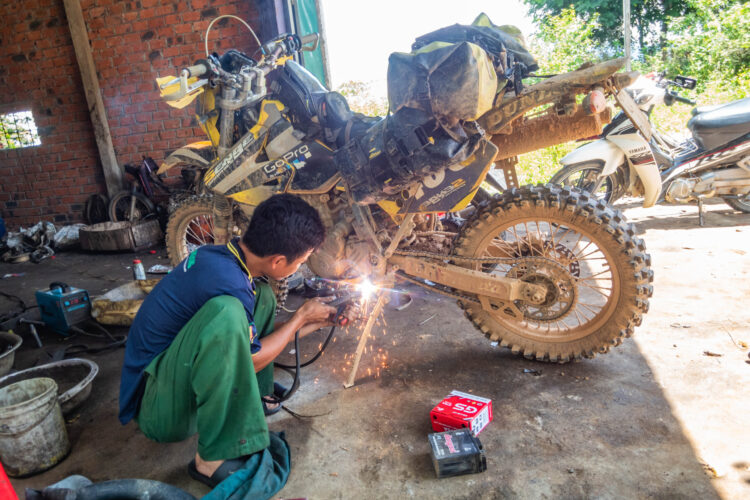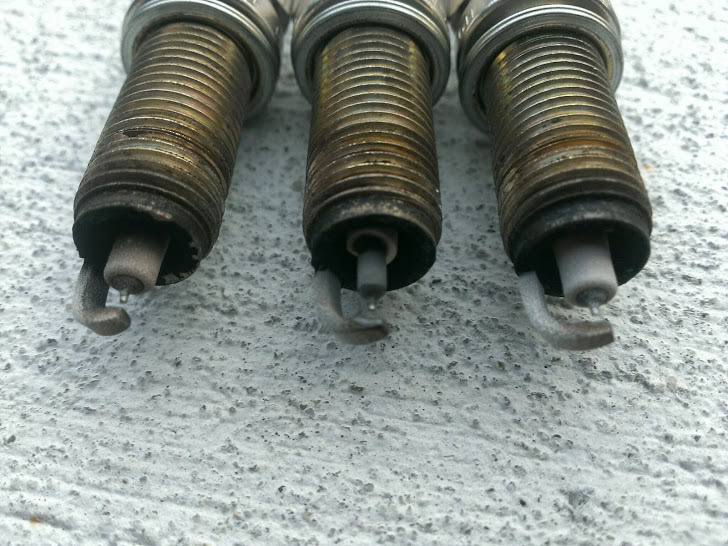Deciding what to change and when to schedule service for a motorbike overwhelms most people, to the point that they do random services or none at all.
Opening a motorbike service manual almost creates more questions than it answers. Difficult motorcycle terminology goes over the average person’s head. Then there’s the inconvenient schedule such as changing the oil at 5,000km, but the spark plug at 8,000km.
Just like a lazy man’s diet that guarantees weight loss, or a lazy man’s gym routine that guarantees muscle building. I am going to give a lazy man’s maintenance schedule that guarantees you are taking care of your motorcycle without investing much time and effort.
The table below is a very reasonable maintenance schedule with mechanic shop visits every 5,000km. One big service every 20,000km.
Note: This motorbike maintenance schedule should not be followed if you don’t understand the content in this article. Skim reading the article could lead to bad results! It is also not appropriate for every motorbike, it is mostly designed for scooters rather than big bikes.
| Number of KM | 5,000km | 10,000km | 15,000km | 20,000km |
|---|---|---|---|---|
| Engine Oil | Change | Change | Change | Change |
| Oil Filter | Change if you can | Change if you can | Change if you can | Change if you can |
| Transmission oil | Change | |||
| Air filter | Change | |||
| Spark Plug | Change | |||
| Drive Belt | Change | |||
| Chain and Sprocket | Inspect | Change if unsure | ||
| Tires | Inspect | Change if unsure | ||
| Brakes | Inspect | Change if unsure | ||
| Brake Fluid | Change |
Maintenance Schedule
Contents [show]
Every 5,000km
In Vietnam, most mechanics will recommend oil changes every 1000km. This is far too regular and inconvenient for our lazy man’s schedule.
Look inside your service manual and you are likely to find oil change intervals that should be between 5,000 and 10,000km.
The most common question I see online and from riders:
Why do Vietnamese mechanics recommend 1000km oil changes?
Up until recently, high quality fully synthetic oil was not available here, therefore mechanics recommend regular changes with cheap mineral oil.
If the motorbike has an internal problem such as an oil leak or an engine that burns oil, then the 1000km oil change stops the motorbike from ever running out of oil.
However, when pushing this service interval to 5000km or more, a motorbike in poor condition will run out of oil before reaching the next service.
Mechanic diagnostic skills are limited in Vietnam. They play the safe game of recommending regular service intervals instead of trying to predict failures that may happen between long service intervals.
The solution to your motorbike oil change frequency question
Use a specialist mechanic shop that stocks fully synthetic high-grade oil. The mechanic shop will also need to be skilled enough to properly diagnose your motorbike for oil leaks and other problems. You can also learn to check the oil levels yourself and do this every 1000km to make sure the motorbike still has oil inside.

Every 10,000km
- Change: Engine oil and spark plug
In most service manuals, the spark plug change is recommended at 8,000km. In Vietnam mechanics never change spark plug unless the motorbike breaks down first. Then the spark plug is the first layer of diagnostics and they will opt to change it. This is of course, after inconveniencing you with a breakdown that never should have happened. The spark plug impacts both performance and gas consumption. Even if your motorbike is happily ticking along without failing, an old spark plug could be wasting your money on poor gas consumption. Spark plugs are cheap, it is well worth getting them changed.
Note: Mechanics love to look at spark plugs pretending to check the condition. Whilst spark plugs can be checked by the naked eye, it is actually a specialist diagnosis that is way above the capabilities of the average street mechanic. Most motorcycles will accept nearly any spark plug. However most motorcycles have model specific spark plugs. Putting in generic plugs will work, but it doesn’t help with performance down the line.
Every 15,000km
- Change: Engine oil
Back to the simple routine oil change. Nothing else needs to be done on this service interval.
Note: 15,000km is roughly the time at which most tires, brake pads and chain/sprocket sets (manual/semi) begin to die. These items might not necessarily need to be changed at 15,000km, but they should be checked.
Every 20,000km
- Change: Engine oil, Air Filter, Drive belt, Transmission oil, and Brake oil
Most service manuals will recommend an air filter change at 18,000km. We will extend this a little to 20,000km. Most mechanics in Vietnam will spray the air filter with compressed air to clean it. We don’t want a clean, we want to change the air filter.
Drive belts (automatics) are recommended to be changed at around 24,000km. However this 20,000km number is a nice round number that can be remembered, so this is going to be the “big service”. Alongside the new drive belt (automatic), we are going to change the transmission oil. Most people don’t even know it exists. It never gets changed in Vietnam!
The tires, brakes, chain, and sprocket set (manual/semi) are likely to be at the end of the life cycle. These should be changed unless the mechanic is advising otherwise.
Brake oil is recommended to be changed every two years. For most people, this will be around 20,000km. Two years is a strange interval, where the distance of time is so long that people forget when it was last done. This results in it never getting done.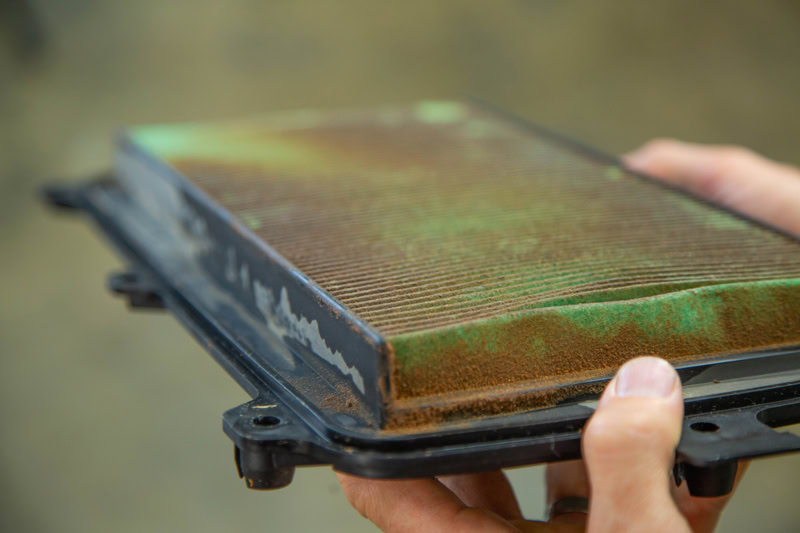
25,000km
- We are back to the beginning of this loop, refer back to 5,000km
The cycle starts back at 5,000km. Organized folk will be running a spreadsheet to try and remember what they replaced and when. Is this out of the realms of a lazy man’s maintenance schedule is up to you to decide.
Note: OEM parts may be more expensive than cheap Chinese parts found in backstreet mechanic shops. However over time, the OEM parts work out cheaper. Another reason Vietnamese mechanics recommend the 1000km oil change schedule is because the Chinese parts they often use are impossible to predict a failure. Chinese parts have sudden and unexpected failures. OEM parts tend to fail over time, giving both the rider and the mechanic a chance to see the problem before everything goes wrong.
Oil Filters – Automatics, semi-automatics, and cheap manuals
Most scooters have internal oil filters or oil screen filters (that should be cleaned). However in Vietnam oil filters never get changed or cleaned. Oil filters are also model specific, and mechanics won’t have them in stock so they will gloss over the change. This is a lazy man’s maintenance schedule and we are not interested in micromanaging the mechanic. Years of running motorcycles in this country has demonstrated to us that letting the oil filter change slide is not the end of the world.
Note: Back in the real world, oil filters should be changed with every oil change. If you have a high-performance motorbike, skipping the oil filter is not acceptable (explained below).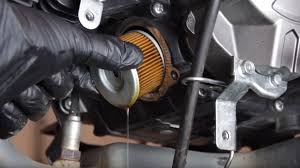
Oil filters – manual motorbike
Manual motorbikes tend to be optimized for performance in one way or another. This may be optimization for long-distance or optimization for extra power. For example, if it is a long-distance road motorcycle, the service intervals are likely to be large (10,000km). If it is a high-performance motocross bike with a bomb of an engine. The service intervals are likely to be short (8 hours of driving).
Whatever the motorcycle was designed for. It was designed to its limits and therefore changing the oil filter with the oil should be diligently followed.
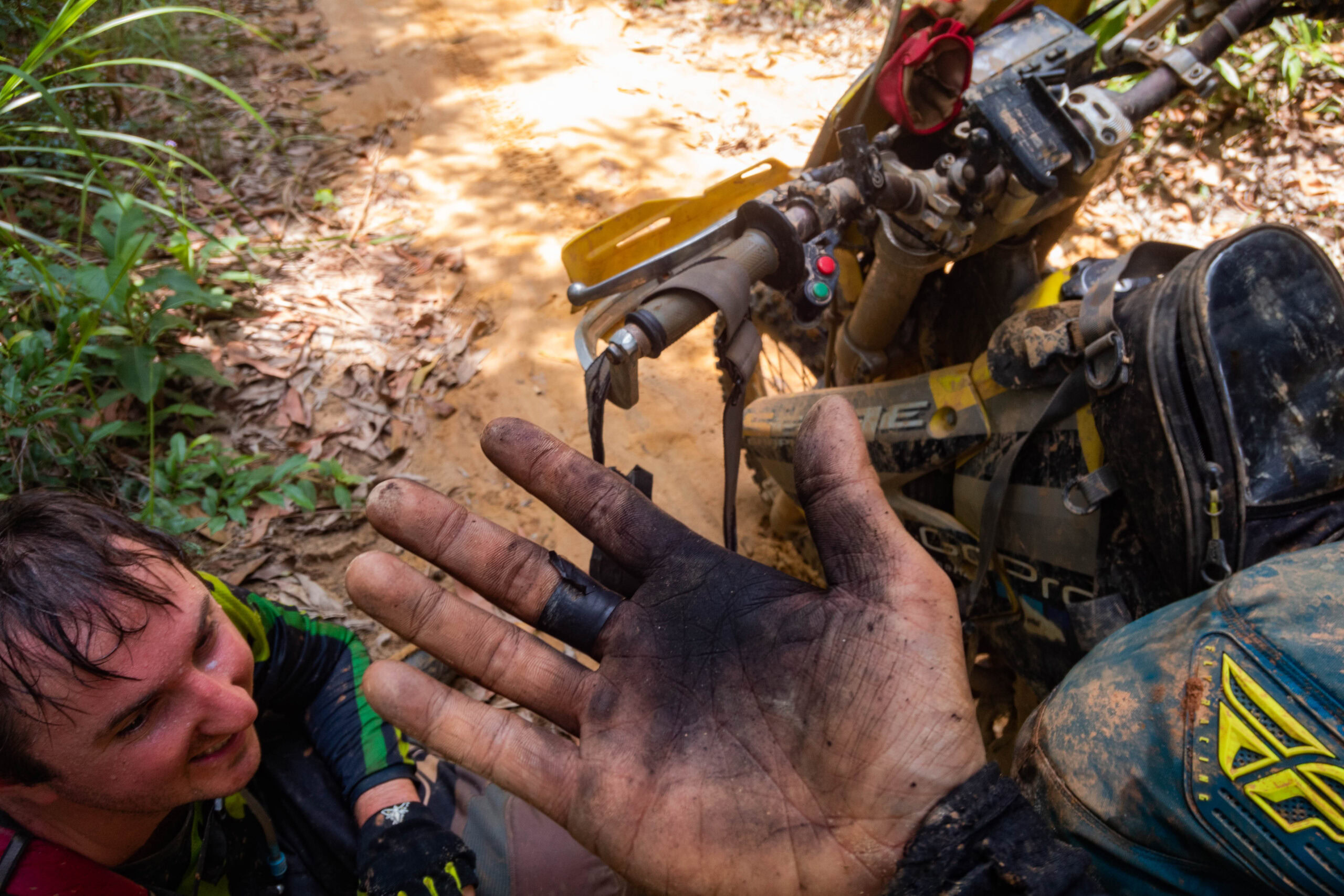
Chain and sprockets (manuals and semi)
Locally made OEM chain and sprocket sets have a shelf life of around 6,000km – 10,000km. A decent DID set has a shelf life of 20,000km – 30,000km. It is well worth investing in a proper DID chain and sprocket set.
Honda recommends lubing the chain every 5,000km. However we think this is on the long side, and we tend to oil the chain every two days of driving (250km).
You can either buy a bottle of chain lube or get a small bottle and grab some old engine oil from a friendly mechanic (free). We can’t see the difference between the two options and Tigit mechanics have remained loyal to generic grease and old engine oil to keep our motorbikes running.

The battery
Batteries tend to have a warranty period of one year, and operating life of 2-5 years. We have had batteries fail at all ages. For a person looking to avoid a failing battery, we recommend replacing every two years. Good quality batteries will have a date stamp. This can be used for reference.
Tires
Tires are dependent on the tread design (road or offroad), and the brand. However most locally made tires for scooters tend to last around 6,000km – 10,000km. This is a short lifespan, and it is worth investing in a brand that isn’t sold in the average backstreet mechanic shop. A good quality road tire should be lasting 20,000km – 30,000km
Brake pads
Brake pad wear is unpredictable and they wear at different rates. Elements that impact brake pad wear are rotor condition, environment the bike was used in, and the brake pad brand. Generally, a brake pad set should last between 15,000km – 20,000km. If you are not reaching this service interval it might be worth investigating what is going wrong.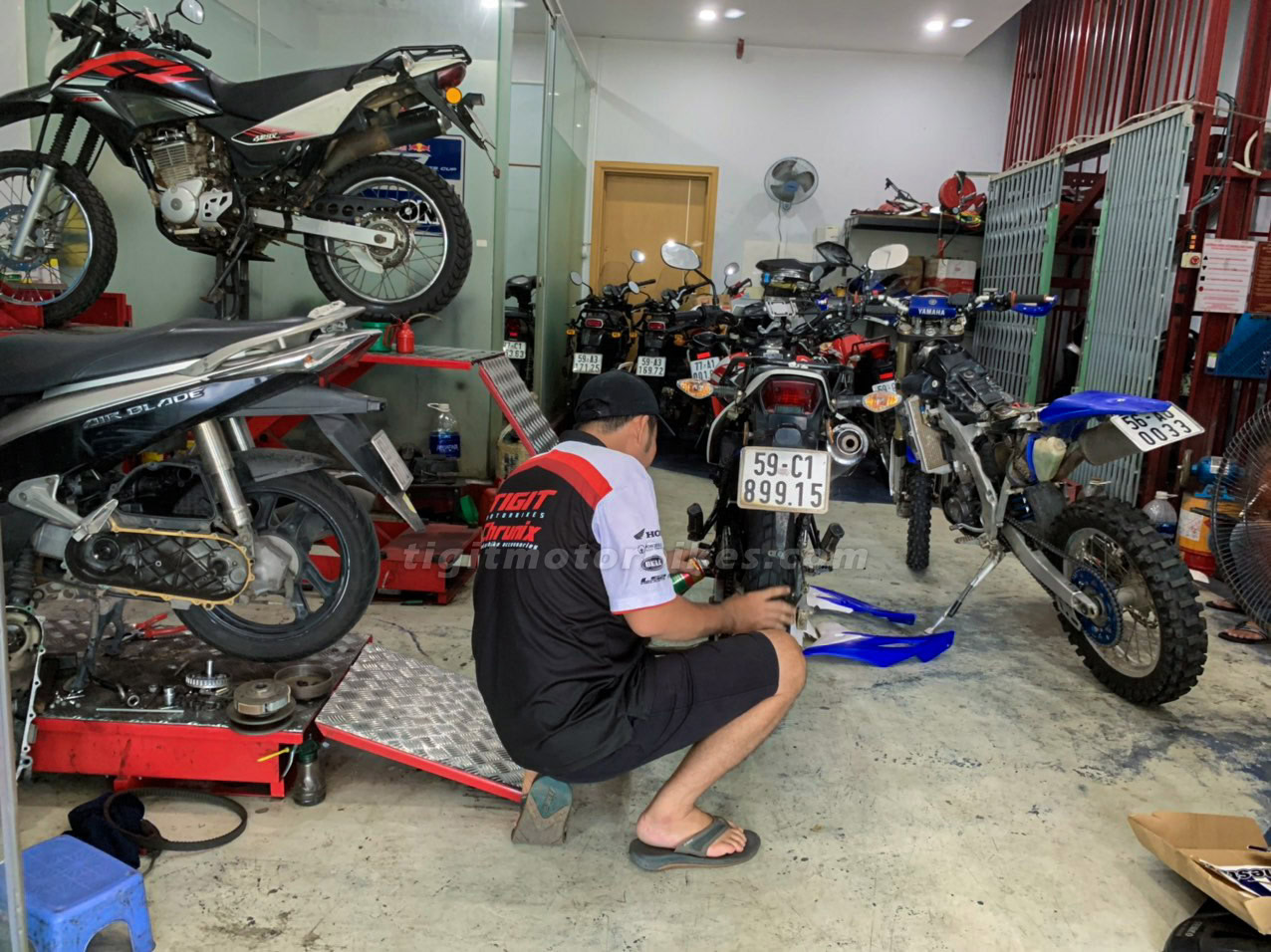
Choose a specialist mechanic shop
The longer the gap between the service interval the more room there is for things to go wrong. With 1000km intervals, the next service is always just down the line. If you are going to follow the lazy man’s maintenance schedule, then make sure you are using a decent mechanic shop that should be able to predict the parts lasting for the next 5,000km.
